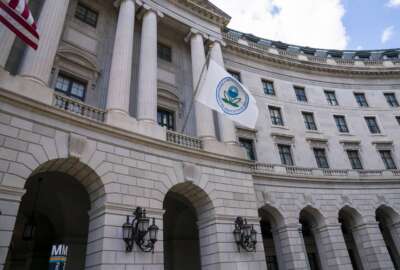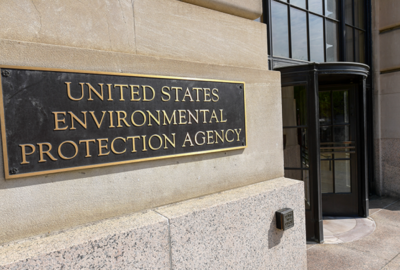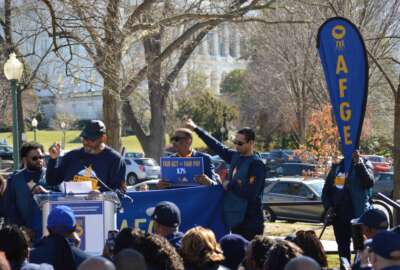EPA looks to revamp U.S. school bus fleet
The EPA got $5 billion to use as grant funds for new school buses under the bipartisan infrastructure bill.
For many school districts, especially in poor or rural areas, buses are old and belch too much smoke. The EPA got $5 billion to use as grant funds for new school buses under the bipartisan infrastructure bill. The challenge was how to design a funding system so school districts could take advantage of it for successfully getting that done. The EPA team members are finalists in this year’s Service to America medals program. Joining the Federal Drive with Tom Temin with the details, the supervisor of the EPA’s Legacy Fleet Incentives and Assessment branch. Christine Koester.
Interview Transcript:
Tom Temin And we should point out Carl Simon and Matthew Lakin are your cohorts in this effort? Tell us what this was all about wasn’t something that already existed this kind of funding channel. And what did you have to design here?
Christine Koester This was a new funding stream that was, as you mentioned, created from the Bipartisan Infrastructure law, it’s $5 billion over the course of five years to replace older school buses with new zero or low emission models. So, we fund electric replacement school buses, propane and compressed natural gas, we offer a variety of funding opportunities, we’ve done three to date, we just actually announced another round of selections just last week. So, in total, we’ve awarded nearly $3 billion thus far out of the 5 billion to replace school buses across the country. So, we did create a brand-new program, and it’s called the Clean School Bus program. And yet, it’s been very exciting to work on this, this new program and makes such a difference for children’s health.
Tom Temin And your citation mentioned that forms and the processes for applying were also kind of reinvented relative to existing programs. So that say tribal school districts or really rural ones, could navigate their way through it.
Christine Koester We’ve done three funding programs thus far. And two of them have been rebate programs. And one of the things we kept in mind when creating this rebate program is we wanted to make it accessible and fairly straightforward for applicants. So potential applicants can apply online. And it’s about equivalent to a one page, a one-page form. And it’s designed to be a lottery selection, and then a faster project period. And we do offer priority that the statute allows for low income, rural and tribal applicants, and they are eligible to receive a higher cost share out of our program.
Tom Temin And how do you make sure they actually disposed of the old buses and actually took possession of the new ones?
Christine Koester We have a couple check in points with all of the recipients for the programs are very first funding opportunity came out in the spring of 2022. And those folks will be wrapping up their projects in October of this year. And at that time, they will submit to us photographic proof of that the old bus has been scrapped, and they’ve taken delivery of the new buses. And one of the reasons we require scrappage of the old buses is to make sure that the higher polluting buses are not in service any longer.
Tom Temin Sure. I mean, they do make great sort of mobile condos, could they be converted that way?
Christine Koester I actually just got a question today from somebody looking to take a bus frame and turn it into a bus shelter or bike shelter. So, people are thinking of some innovative things to do with the frame and some of the other parts of the buses.
Tom Temin Just kind of get a little lower on the ground and bus for bus. I mean, the standard yellow school bus, if I remember, has like 44 seats plus the driver. These are pretty much plugged compatible replacements in terms of capacity.
Christine Koester Yeah, we replace a variety of sizes, most of them tend to be what’s called a Type C bus. So probably what you’re picturing in the larger school bus that’s out on the road. Yeah, and it’s a one to one. So, if you buy a new bus that replaces they replace the new bus with our program, you have to scrap one of the older buses, and we do encourage people to scrap the oldest buses that they have in their fleet first. Those that are engine model year 2010 and older have the highest emissions.
Tom Temin And by the way, is that the same manufacturers because there are some venerable companies Bluebird, you know, and whatever that make school buses, is that industry modernizing within the existing infrastructure?
Christine Koester Oh, yeah, the all the original engine manufacturers that we work with, like the one you mentioned, they provide electric school buses and then there’s a number of new companies that are also getting into the electric vehicle market that are eligible for funding as well.
Tom Temin We’re speaking with Christine Koester, she’s supervisor of the Legacy Fleet Incentives and Assessment branch at the Environmental Protection Agency. And how many buses are involved here. I guess what I’m getting at is if you retire if you are going to buy a new old bus, so to speak, is the new electric or the new high over the new gas powered, natural propane bus less expensive or more expensive, or do the dollars go as far for these newfangled buses.
Christine Koester Yeah, so electric buses, propane and CNG. Buses all do cost a little bit more than their diesel counterparts. So that’s one of the factors that we take into consideration when we set our cost share. Electric busses are on average around $375,000, you know, is this an increase compared to it to a diesel bus. So, we’re trying to offer funding to provide incentive for folks to, you know, replace their older diesels with either an electric or a CNG, or propane bus, we’re also trying to be mindful of driving down the costs over time. So, when our program concludes that hopefully the prices of the electric buses will have come down a little bit.
Tom Temin And what is the distribution mechanism for the vehicles themselves? That is to say, Can EPA Do you have the capacity or the authority to go to a couple of manufacturers? And this can get maybe into contracting issues, but say, Listen, we have grants that are going to go out that are going to result in an aggregate of 50 buses, can you get the 50-bus rate, instead of the one of bus rate district by district?
Christine Koester Yeah, I think that’s something that we’re seeing the applicants for our funding, do some bulk pricing purchases that they’ve made. So, we had two rebate programs and one grant program, the grant program, we did allow larger project sizes, so you could apply for up to 100 buses, with the hopes of what you just described, hopefully driving down some of the costs for a large purchase.
Tom Temin And are these districts organizations that may not have applied to the EPA for grants earlier? And if so how did you get them to know about this opportunity?
Christine Koester It was a huge outreach effort, our EPA regions, there are 10 of them, throughout the country, they have a lot of relationships with local governments and school districts within their region. So, they did a lot of work to, to put out the word and encourage people to apply. We host pretty regular webinars where we try to share information about the program for potential applicants and those who have already been selected. And then there’s, you know, a network of organizations that go out there as well and encourage people to apply.
Tom Temin Alright, and just give us the summary how many districts how many buses so far? And do you have an estimate of how much co2 has been retired?
Christine Koester Yeah, we are working on our emissions methodology. And hopefully, we’ll be posting or publishing some of that information in our Annual Report to Congress that we’ll expect in January of next year. But thus far over the three funding rounds that we’ve done. We’ve made awards of like I said, nearly $3 billion, and these go to more than 1200 school districts across the country. And we’ll replace more than 8,500 buses.
Tom Temin Yeah, that adds about based on the price you said 3 billion sounds about right. Does EPA have an estimate even of how many school buses there are in the country that are potential for this? I mean, we’re I live in Montgomery County, Maryland, you drive on the spur, you go down 270, where they park the buses to the side, it’s a sea of yellow buses. There must be I don’t know how many 1000s of buses down in there.
Christine Koester There are there are many buses, school buses out there on the road. You know, I’ve seen estimates around like 480,000. So, one of the things I mentioned before, we are being mindful about trying to drive down the EPA cost share in hopes that the cost of these buses will come down, so they’ll be continued to be more accessible for people across the country after our program has concluded.
Copyright © 2025 Federal News Network. All rights reserved. This website is not intended for users located within the European Economic Area.
Tom Temin is host of the Federal Drive and has been providing insight on federal technology and management issues for more than 30 years.
Follow @tteminWFED






